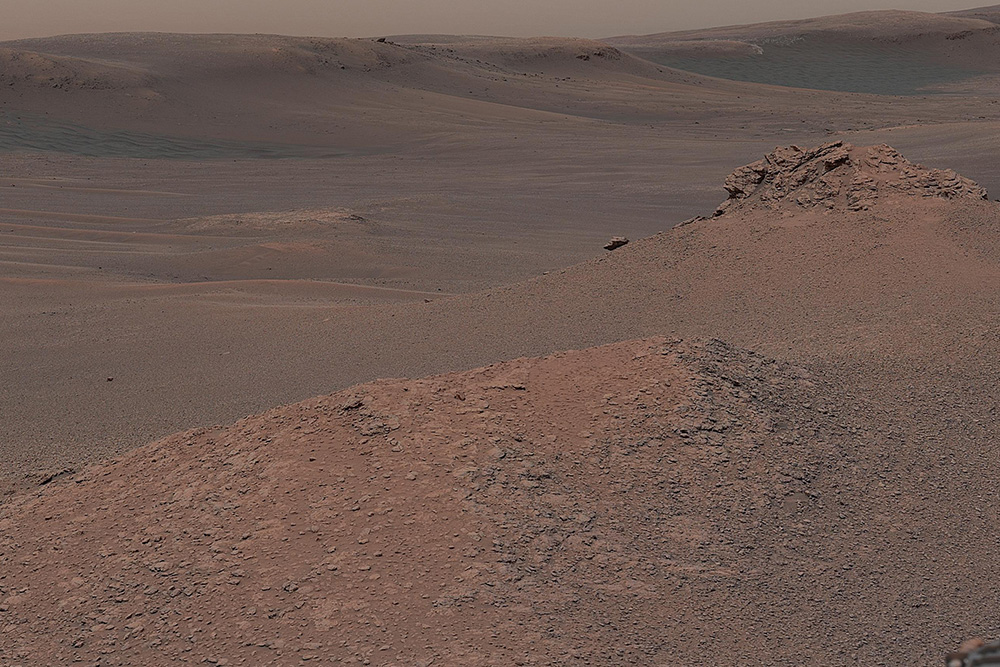
The Curiosity rover’s adventures on Mars continue with an exploration of the hopefully clay-rich bedrock in a part of Mount Sharp. Curiosity previously had problems drilling into the hard Mars bedrock, but its new location in the “clay-bearing unit,” as its called, is making drilling much easier. The softer soil was no issue for Curiosity’s drill this time, and it was easily able to collect a sample for analysis.
Curiosity collected a sample of bedrock called “Aberlady” on Saturday, April 6, which the rover returned to its mineralogy lab on Wednesday, April 10. Now scientists can analyze the sample. They are particularly keen to look for traces of clay minerals, as the presence of these minerals can indicate whether there used to be water present in the region. Evidence suggests that at one point there was liquid water on the surface of Mars, and Curiosity’s samples could confirm this.
The clay-bearing unit is near to a rocky landmark named “Knockfarril Hill” and not far from the Vera Rubin Ridge where the rover was previously situated. Curiosity is currently climbing a huge mountain called Mouth Sharp, which has revealed a variety of geological features. It has found several kinds of bedrock and sand, and as you can see from the image above, there are pebbles everywhere on the surface. Scientists are still trying to work out whether these pebbles were eroded from the bedrock or came from a different source.
“Each layer of this mountain is a puzzle piece,” Curiosity Project Scientist Ashwin Vasavada of NASA’s Jet Propulsion Lab said in a statement. “They each hold clues to a different era in Martian history. We’re excited to see what this first sample tells us about the ancient environment, especially about water.”
Once the data from Aberlady has been analyzed, there are further plans for Curiosity. The researchers will send the rover to drill for more samples in the surrounding area to see how the rock here differs from the Vera Rubin Ridge it explored before, then the rover will explore an area higher up on the mountain which seems to contain sulfate.



